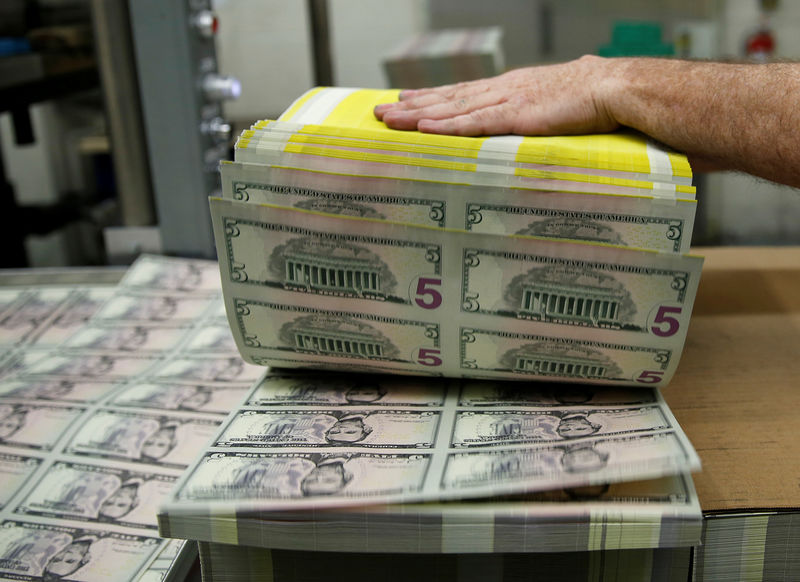By Peter Nurse
Investing.com - The U.S. dollar drifted sideways in early trading in Europe on Friday, amid signs of increasing risk appetite in Europe as investors looked for the end of the coronavirus outbreak.
At 3:35 AM ET (0735 GMT), the U.S. Dollar Index, which tracks the greenback against a basket of six other currencies, stood at 100.17, up 0.1%, while EUR/USD rose 0.1% to 1.0840 and GBP/USD fell 0.1% to 1.2445. USD/JPY fell 0.2% to 107.72.
Overnight U.S. President Donald Trump laid out new guidelines for the reopening of the U.S. economy, backing down markedly from claims earlier in the week that he could dictate terms to state governors. The guidelines contained no hard dates for any reopening measures.
Risk sentiment also received a boost from Gilead Sciences (NASDAQ:GILD) announcing overnight that clinical trials of its antiviral drug remdesivir showed promising results in treating the COVID-19 virus.
That said, the dollar remains in elevated territory: after all, a safe haven must remain in demand after Thursday’s latest jobless claims figures showed that over 22 million Americans had applied for unemployment benefits over the last month.
It’s against the emerging markets’ currencies that the U.S. dollar is really showing its strength, with the IMF’s prediction that the world economy would contract the most since the Great Depression pressurizing those countries which rely on external financing.
At 3:35 AM ET, USD/TRY traded at 6.9467, up 0.1%. The lira us now approaching the all time lows hit in 2018.
The lira has long suffered from a hefty current account deficit and large amounts of private foreign-currency denominated debt. Now throw in an economy that faces being shut to stop the spread of Covid-19, and it’s easy to see further losses.
The Turkish banking watchdog announced on Sunday it was capping local banks’ ability to conduct foreign exchange transactions with foreign entities, to try and curb the supply and the potential downside of the lira.
But these capital curbs could ultimately damage lenders’ willingness to meet the country’s massive financing needs, hurting the lira in the long run.
All this said, the lira isn't even close to being the worst performing emerging market currency this year - with the South African rand and the Brazilian real taking those 'plaudits'. The dollar has risen 34% against the rand and 30% against the real since Jan. 1.
